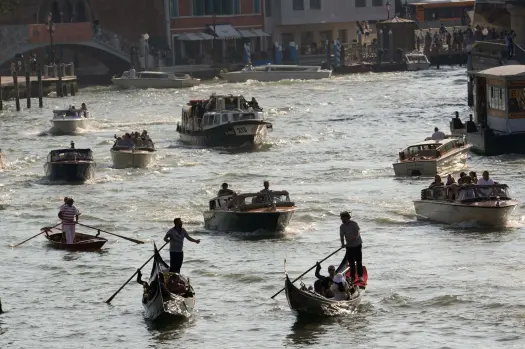
The storied Italian lagoon city of Venice escaped inclusion on UNESCO ‘s list of world heritage in danger during a meeting of the World Heritage Committee in Saudia Arabia on Thursday, as member states commended preservation efforts, including a pilot project that will make Venice the first city to charge entry.
It is the second time Venice has escaped being labeled an endangered world heritage site, as recommended by the UNESCO’s committee’s findings that climate change and mass tourism are among threats “causing irreversible impact to the outstanding universal value” of Venice and its lagoon.
The vote came just two days after the Venice city council approved an experimental plan to charge day-trippers a 5-euro entrance fee on 30 high-traffic days next year — one of the efforts cited by many of the 21 countries that supported keeping Venice off the list.
Venice similarly avoided being labeled an endangered world heritage site in 2021 after the Rome government announced a ban on big cruise ships past St. Mark’s Square and through the Giudecca canal.
The UNESCO committee in its recommendation cited the negative impact of mass tourism, damage to the lagoon by large ships and oil tankers entering via another route, climate change leading to more frequent high tides as well as uncoordinated development.
As the UNESCO decision loomed, activists this weekend revealed official data showing that the number of tourist beds in Venice outnumbers residents by 49,693 to 49,304 residents. Some are demanding that only full-time residents be permitted to rent apartments to tourists on a short-term basis, and they criticized a ban on new hotel rooms as insufficiently enforced.
UNESCO officials have emphasized that a downgrade is not meant to be punitive, but to alert the world community that more needs to be done to address issues plaguing a World Heritage site.





